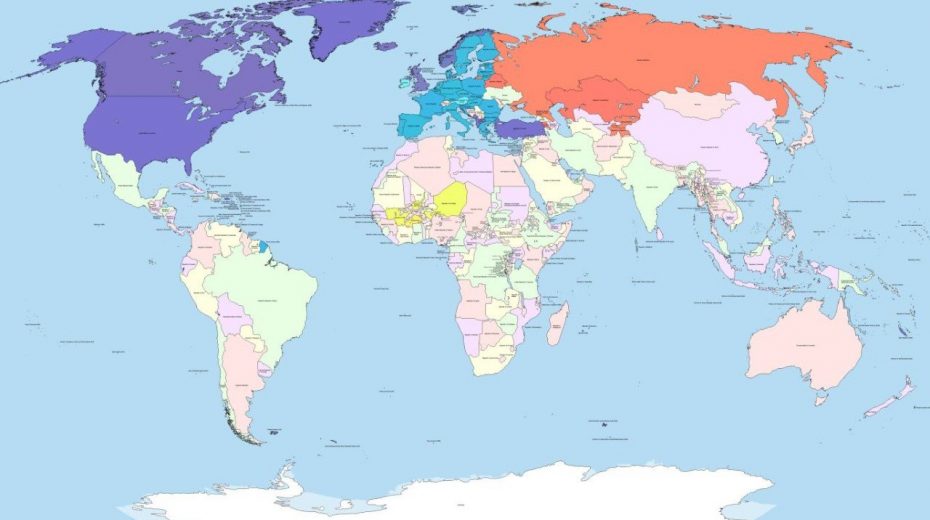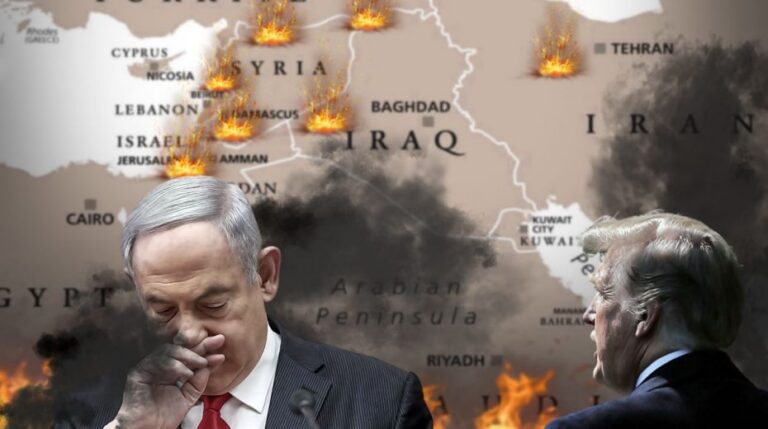
By Giorgio SPAGNOL
Foreword
The world is in a very dramatic situation with remarkable geopolitical changes that are underway.
The familiar global order, once led by the United States and Europe, is dissolving. This marks the conclusion of an era defined by Western dominance over the international system, a dominance that originated with European colonial empires and was later assumed by the US following World War II.
This shift ends a prolonged cycle stretching back to 1492, which began with a voyage that dramatically altered global history.
The world, previously directed by Europe, was characterized by vast oppression, inequality, and control. Although it spurred significant technological advancements, these were often exploited as instruments of power and subjugation. The United States maintained global supremacy for roughly fifty years starting in 1945.
Background
Before the 16th century, China held the position of world power. The Silk Roads served as the pivotal axis connecting civilizations from the Eastern Mediterranean to the Pacific, facilitating commerce, scientific development, philosophical dialogue, and the spread of major religions such as Judaism, Christianity, Islam, Buddhism, and Hinduism. However, the arrival of Columbus in America and Vasco da Gama’s voyage around Africa dramatically altered the geopolitical landscape. Europe, once a marginal and isolated region of the Eurasian continent, unexpectedly became a global nexus, linking East and West.
Historical accounts were then rewritten and distorted to promote the narrative of Western supremacy as an eternal truth, while Asia was unfairly portrayed as underdeveloped, uncivilized, and inferior.
From the late 20th century onwards, the US and Europe launched destructive efforts to uphold their dominance between East and West.
Despite Western propaganda, the resurgence of marginalized peoples and civilizations is unstoppable. The West must now confront this process deliberately and calmly, without hysteria.
Recent surveys from British Petroleum (BP) confirm that Middle East, Russia, and Central Asia control 70% of the world’s oil and gas reserves.
In 2013, Xi Jinping declared in Astana (Kazakhstan): “The time has come to build a Silk Road Economic Belt. We are people of different races, faiths, and cultures, but striving for development and progress: this is not the birth of a new world, but the rebirth of the old”. Shortly after, Samarkand (Uzbekistan), the Silk Road’s historic hub, was recognized as a World Heritage Site—the “Crossroad and Melting Pot of World Cultures”.
US Mistakes and Misjudgements
Beginning with Winston Churchill’s Iron Curtain speech at Westminster College in Fulton, Missouri, in 1946, the Cold War ignited a tense standoff between the Soviet Union and the United States. Throughout this period, Western powers unquestionably held sway over global affairs. However, this dominance ended approximately 25 years ago, a reality overlooked after the Soviet Union’s collapse as a new multipolar world took shape, driven particularly by China’s ascent alongside India and other emerging nations.
The United States, conversely, clung to the notion of Western global leadership, claiming to be the world’s sole superpower. This was an arrogant and dangerously miscalculated fantasy. The US proclaimed its unipolar supremacy just as Western hegemony was disintegrating. For twenty-five years, a clash ensued between this arrogance and the emerging reality. Both the United States and, to some degree, Europe—especially Great Britain—persisted in believing they commanded global affairs and could dictate terms to leaders like Putin, Xi Jinping, Modi, and Lula. Yet, the world is undergoing profound transformation.
Current situation
Today’s world is markedly different, with the voices from other regions growing louder and more influential. In Western media and politics, this generates rising anxiety, whereas countries like China and India remain optimistic. African public opinion is notably hopeful, making the continent the most confident globally. Conversely, anxiety is most pronounced in the United States, where losing dominance is deeply unsettling. Nevertheless, the evolving world landscape promises greater diversity, interconnectedness, and equality—potentially leveraging technological breakthroughs for global benefit.
United States of America
The US political framework has faltered, operating more like a single ruler system than a functioning democracy governing 340 million people and generating a $30 trillion economy. The country faces deficits in kindness, tranquility, and geopolitical stability, compounded by escalating climate crises expected to worsen over the next five decades.
Recently, the US has declared itself outside numerous global frameworks: the world trade system, climate accords, sustainability efforts, and the WHO. Meanwhile, it represents just 4.1% of the global population.
China and India
Since their independence in the mid-20th century, China and India have grappled with a territorial dispute stemming from a British-drawn boundary in the Himalayas—specifically, a line arbitrarily sketched by McMahon in 1880 without firsthand knowledge of the region. This has fueled conflict and tension ever since.
Curiously, a theory claims the majority of global conflicts trace back to British colonial actions—a notion validated by turmoil in the Middle East, Himalayas, Africa, and beyond.
Recently, foreign ministers from China and India acknowledged the futility of their dispute, agreeing to enhance trade and investments. Positive messages followed from Prime Minister Modi and President Xi.
Similarly, Korea, Japan, and China, historically at odds, are easing tensions. Originally divided by US alliances—Korea and Japan aligned with the US, China considered adversarial—the two former countries reconsidered US protection and sought better ties with China.
Last year, China brokered rapprochement between Iran and Saudi Arabia, which the US, given its preferential Sunni-Shia policies, could never have facilitated.
US, China and India
The United States centers its strategy on maintaining supremacy, but the future belongs to China and India, alongside entities like the African Union and Saudi Arabia.
This new world is one of cultural and economic plurality, offering improved food, richer dialogues, appealing places to live and visit, and increased opportunities for collaboration. Nonetheless, for US strategists, this emerging order appears daunting and perilous.
Addressing these challenges would demand strong cooperation among major powers, yet only China has exerted significant effort. Europe made some initial moves but became ensnared in the crisis in Ukraine—a costly error. The US failed to establish a genuine collective security framework in Europe after 1991, instead opting to expand NATO.
China’s ambitious Belt and Road Initiative is a major constructive force, just as Africa’s African Continental Free Trade Area represents a landmark achievement.
A fundamental change
Two essential observations illustrate this transformation. First, combined populations of the US, European Union, and United Kingdom—the so-called North Atlantic world—number about 900 million people, roughly 10% of the global population. How can such a minority, in an age of ubiquitous technology, internet connectivity, and widespread military capability (including nine nuclear nations), assume it governs the entire planet?
Second, it is unrealistic to believe others lack their own visions, strengths, and abilities to resist unilateral orders. This Western illusion springs from political ignorance, with capitals like Washington, Brussels, London, Berlin, and Paris still viewing themselves as the center of global affairs.
BRICS and SCO
The BRICS nations—Brazil, Russia, India, China, and South Africa—and the Shanghai Cooperation Organization (SCO) represent half of the world’s population and GDP. BRICS now includes newer members such as Egypt, Ethiopia, Iran, the Emirates, and Indonesia, covering regions from Latin America to Asia through Africa and the Middle East.
Originating as an Asian-Eurasian group, the SCO includes China, Russia, India, Pakistan, and four Central Asian states—Kyrgyzstan, Kazakhstan, Uzbekistan, and Tajikistan—with Indonesia and other partners joining later. Often described as an Asian NATO, this alliance is closely connected to the BRICS grouping.
Though their memberships differ, both BRICS and SCO share key traits.
Firstly, they encompass the fastest-growing economies. Secondly, they reject directives from the US, capturing this sentiment perfectly as Brazilian President Lula expressed: “We don’t need an emperor”.
Despite this, the United States continues to insist on global hegemony, openly advocating “primacy” or “full-spectrum dominance” as articulated in military doctrines.
China’s economy has already outpaced the US in size and commands greater industrial capacity in numerous sectors. It is poised to lead in electric vehicles, solar energy, zero-emission shipping, and more.
The colonial heritage
Some argue that while Europe exploited its colonies, it also spread knowledge and science. The truth is Europe did so through empire, warfare, conquest, forced famines, and other brutal methods. These advances could have been shared through trade, cooperation, and respectful relations.
Today, in terms of literacy, education, technology, and industry, the world has become far more balanced, sometimes even surpassing the West. Despite this, Western powers cling to the idea of maintaining a Western-led global order, a notion that has now become outdated.
Meanwhile, the United States finds itself with one of its least qualified presidents, a former real estate developer lacking experience in geopolitics. Understanding global dynamics demands far greater expertise.
Rather than attempting to govern a lost empire, it would be wiser for the US to focus on domestic issues such as healthcare. Europe, too, remains mired in illusions of past glories, prolonging outdated conflicts well into the 21st century.
The belief that Russia aims primarily to invade Western Europe is absurd—a gross misreading of history that no responsible adult should entertain.
Yet Europe twists itself endlessly over unfounded fears, which persist because its leaders have lost the ability to comprehend the other side. A simple phone call, a flight, or an invitation for a coffee could reveal much.
Donald Trump
Ultimately, the reality is a multipolar world. Western—and especially US—dominance is an illusion creating a dangerous rift with reality. Donald Trump exemplifies this by regularly issuing blunt orders to China, Brazil, India, and Russia: “You must have an unconditional ceasefire,” he demands of Russia; “You must stop a judicial process,” he tells Brazil; “You must stop buying Russian oil,” he commands India.
These directives lack diplomacy or insight and are broadcast openly on social media, expecting compliance from nations that outnumber America many times over. Meanwhile, Trump surrounds himself with ill-informed aides who sabotage any remaining diplomatic efforts.
President Truman’s decision to drop atomic bombs on Japan was reckless, yet he rightly emphasized that “Ultimate responsibility lies with the president, and what we need is a presidency that works, that really works.” Currently, the US lacks such leadership. Inside the White House, there is insufficient competence to grasp the gravity of decisions. Trump responds mainly to pressure from neoconservatives and the entrenched military-industrial complex. However, a president’s true role is to say no, a duty he fails to meet.
European Autocracies
In Spain, the far-right Vox party holds 17% support, while in Germany the AFD leads polls. French President Macron faces the dilemma of calling elections after the government’s collapse and rising National Front popularity, and has instead imposed a minority administration allowed under the Fifth Republic’s constitution without parliamentary confidence.
Discussions about autocracies arise because language—like a whirlpool—has its own momentum, as Aristophanes noted. The success of parties opposing pro-European establishments comes from the European Union’s persistent failures, which have led to widespread hardship.
These hardships began with the euro’s introduction without a referendum, slashing real wages, and worsened as the EU chose to finance arms shipments to Ukraine.
Consequently, sanctions against Russia have harmed agriculture and sharply increased ordinary citizens’ energy costs. People understandably wonder why they must endure such suffering.
The notion of “autocracies” is misguided. Consider how democratic systems unfairly exclude minor parties. In Germany, for instance, parties must surpass a 5% threshold to gain seats. The Bündnis Sahra Wagenknecht party received 4.9%, leaving it out of Parliament and enabling Merz to form a government.
Adding to this dysfunction, Romania’s Constitutional Court invalidated a presidential election due to alleged Russian meddling favoring sovereignist Călin Georgescu, who led in the first round.
Autocracies arise from the very electoral frameworks established. A government that disregards popular will through such rules is inherently autocratic.
Following his success in excluding a troublesome party, Merz vowed to make the German military the most powerful in Europe and praised Netanyahu for “doing our dirty work.” Notably, Germany amended its constitution to authorize large military spending.
Regarding the European Union, it has not declared war nor is it a state; member countries individually engage in conflicts such as Iraq, Libya, and the NATO bombing of Belgrade—a campaign with severe consequences, including contamination from depleted uranium affecting veterans.
In fact, Ukraine participated in the 2003 NATO-led coalition against Iraq, a fact widely ignored by Western media.
Is Russia a threat to Europe?
What material assets might Russia covet from Europe? Minerals, uranium, gas, oil, or farmland? Europe lacks these resources and depends heavily on imports. It can only offer attractive vacation sites.
Russia’s vast territory—over 17 million square kilometers—is more than four times the size of the EU’s 4 million square kilometers. While EU population density averages 105 per square kilometer, Russia has just 8 inhabitants per square kilometer, underscoring challenges in managing its own land.
Historically, dense, resource-poor Western Europe has sought to expand eastward into the resource-rich Russian expanse—not the reverse.
Does Europe’s need to rearm stem from Russia’s military expenditures? Currently, Europe spends 38% more on defense than Russia and plans to double its military budget soon.
If the EU genuinely fears Russian aggression, the logical response would be to foster shared interests, which serve as a powerful deterrent against conflict. This involves removing sanctions, restoring trade and investment, and reactivating the North Stream 2 pipeline. Such measures would dramatically reduce tensions while boosting Europe’s ability to supply global markets, including Russia.
Given that the EU has reasons to confront Russia, but Russia has none to invade Europe, the EU’s policy of
a) increasing military spending explicitly aimed at countering Russia,
b) maintaining sanctions and a trade blockade against Russia,
actually escalates the risk of conflict.
Thus, in the name of security, Europe is inadvertently fostering insecurity.
Conclusion
As global power shifts from the West to Asia—particularly China and India—the world enters a new phase where Asia’s economic clout, population size, and military strength will eclipse those of North America and Europe combined. This evolution demands fresh approaches to cooperative global challenges such as climate change and trade. Russia’s role in this evolving configuration remains significant.
The recent summit in China featuring Russian President Vladimir Putin, Chinese President Xi Jinping, and Indian Prime Minister Narendra Modi has attracted widespread attention. Observers view this gathering not merely as a routine diplomatic occasion, but as a powerful statement against US global dominance and a bold move toward de-dollarization. Its symbolic and substantive impacts reach into economies, regions, and nations worldwide, signaling a transition from a Cold War-era unipolar world toward true multipolarity.
For Washington, this trilateral meeting delivers a stark message. Attempts to isolate Russia, contain China, and solidify India’s alignment with the US have failed. As the three Eurasian giants openly endorse “a new global order” with concrete institutional proposals, the United States must confront the reality that its supremacy is fading.
Original article: www.ieri.be




